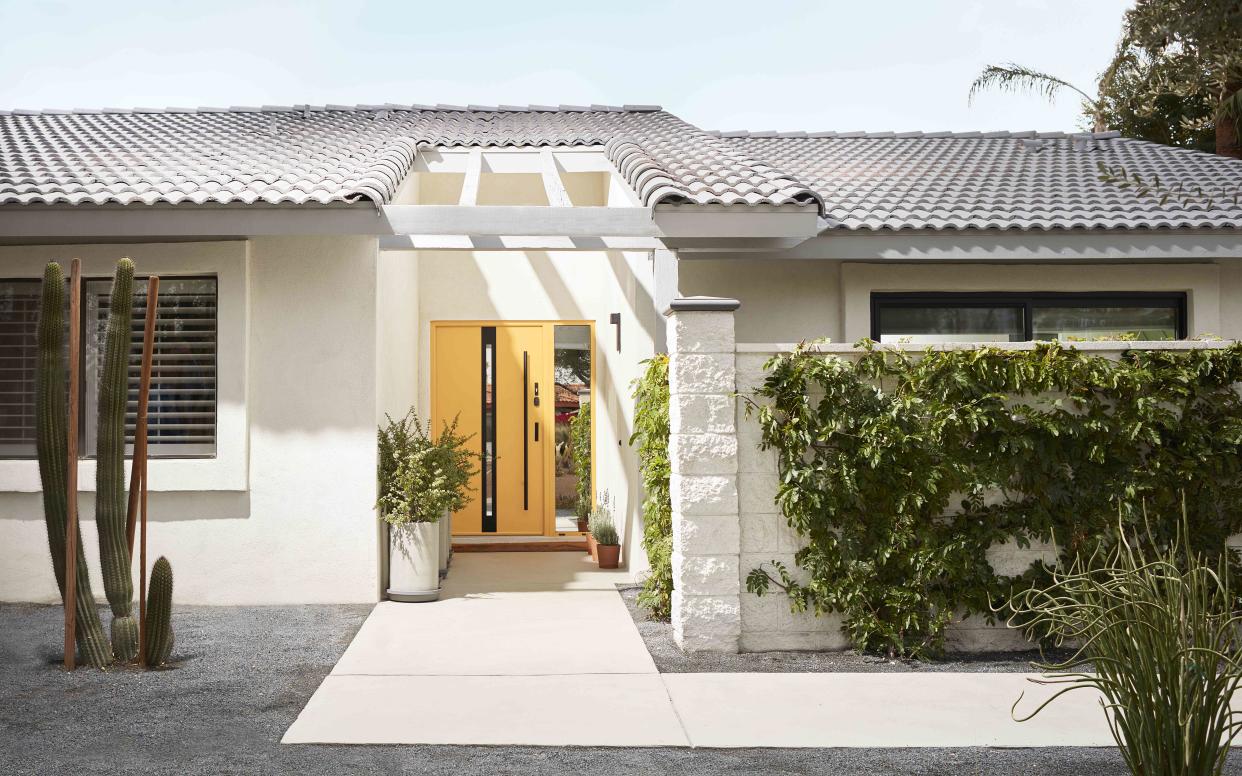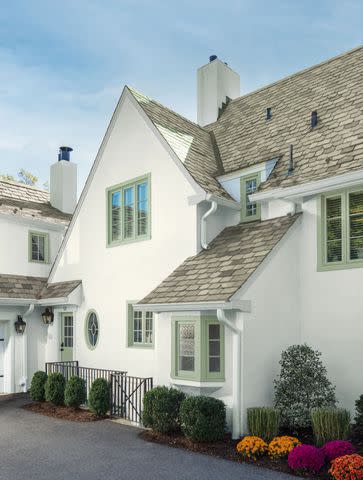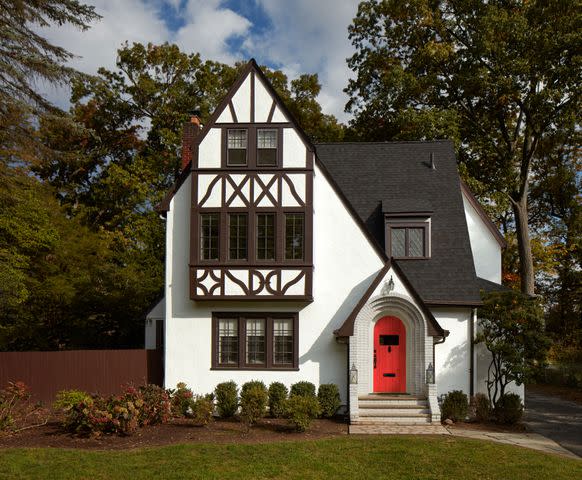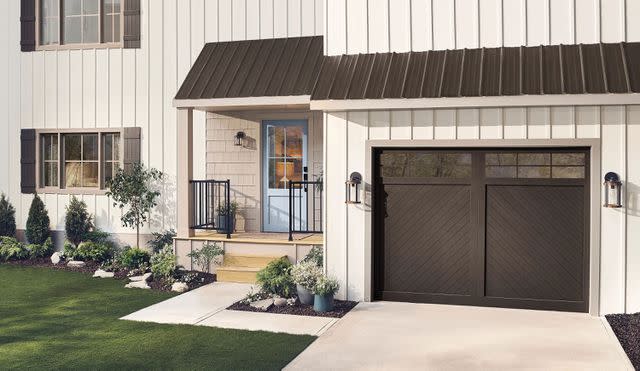6 Rules Pros Always Follow to Choose the Best Exterior Paint Color for a Home

Whether you want to ramp up your home’s curb appeal for your own enjoyment or you're getting ready to sell, giving it a fresh coat of paint can surely help—assuming you choose the right colors.
It's a less costly update—when compared to re-cladding, re-roofing, or re-landscaping—that can still greatly enhance the overall look of your property. If you're unsure of where to start in selecting the perfect color scheme, we've spoken with experts to find out their best tips for choosing exterior palettes, so you can love your home's exterior color for years to come.
Match Materials Already in Place

When it comes to choosing a paint color, it's important to think about the existing cladding and roofing materials as much as they should.
Hannah Yeo, a senior manager of color marketing for Benjamin Moore advises to conduct a thorough visual assessment of surfaces not slated for painting like the roof, brick, or stones.
"Choose hues that harmonize with and unify these different surfaces," she says.
She recommends trying white for exterior walls and a green hue for window trim. The latter elegantly accentuates a roof color with earthy undertones.
Make a Grand Entrance
“Colorful doors often top wish lists for homeowners wanting to infuse playful hues into their exterior space without overwhelming the color balance of the home,” Sue Kim, director of color marketing for Valspar, says.
For an uplifting aesthetic, she recommends Valspar’s Renew Blue 8003-37D because it adds a welcoming charm to any exterior.
Yeo also suggests adding a pop of bold or unconventional color to the front door. Just ensure that the hue shares or complements the undertones of other colors used in the exterior. Alternatively, you can apply unexpected colors to shutters if your home has them.
Complement the Architecture

A house’s architectural style can often help point homeowners in the general direction of the ideal exterior color scheme. For instance, is it a period style or contemporary?
A minimal contemporary home that’s painted rather than clad in timber or brick might fare best in an equally minimal white, black, or gray. Arts & Crafts style houses can sport several different types of palettes ranging from earthy to cheery. And a Tudor revival home tends to call for brown tones.
Yeo points to Benjamin Moore’s rich and aptly named Tudor Brown HC-185. When used on trim against white walls, it will help accentuate the period style’s distinctive architectural features.
Go Timeless

Classic and timeless neutral shades are a safe choice across various architectural styles, from cottages to Cape Cod to colonial homes, Yeo says. She adds that gray tones transcend trends and time periods and complement a wide range of building materials.
While one can’t go wrong with white, Kim suggests trying a creamy white with warmer undertones for a softer, more welcoming alternative to stark white. “It’s a modern take on a timeless staple,” she says.
“While bold colors can infuse personality into a home, warm neutrals bring a level of comfortable sophistication and have staying power for years to come,” Ashley Banbury, color marketing manager at HGTV Home by Sherwin-Williams, says.
She points to the brand’s Softer Tan HGSW6141, Alabaster HGSW7008, and Black Fox HGSW7020 as examples.
Think Warm and Cozy
Speaking of neutral and earthy palettes, Karen Frome, founder of Rise Projects, points to two trends that likely won't be going out of style anytime soon: White exteriors with a dark trim, which combined create a crisp and clean aesthetic, and incorporation of browns and caramels.
The latter are still neutral and very much a part of nature, Frome says. "Earthier tones feel lived in and relaxed."
Frome explains how the shift toward these styles reflects bigger societal feelings toward clarity and homey warmth during uncertain times.
Put It in Context
Make sure to consider the neighborhood context when building a new home. For instance, stark minimalist construction can be considered either an eyesore or a bold new statement in a historic neighborhood full of turn-of-the-century period houses.
The same approach applies to repainting your home. But, think beyond just the neighboring structures and look to the surrounding landscape and nature.
“Whether it's the verdant greenery, the azure coastline, or the hues of neighboring houses, observe your surroundings and take note of the colors enveloping the home,” Yeo says.
Yeo recommends choosing colors that will blend well with the similar undertones to those surroundings. "Opt for complementary colors that are opposite on the color wheel to make your house stand out," Yeo says.
Read Next: 20 of the Best Gray Exterior House Colors
Read the original article on The Spruce.

